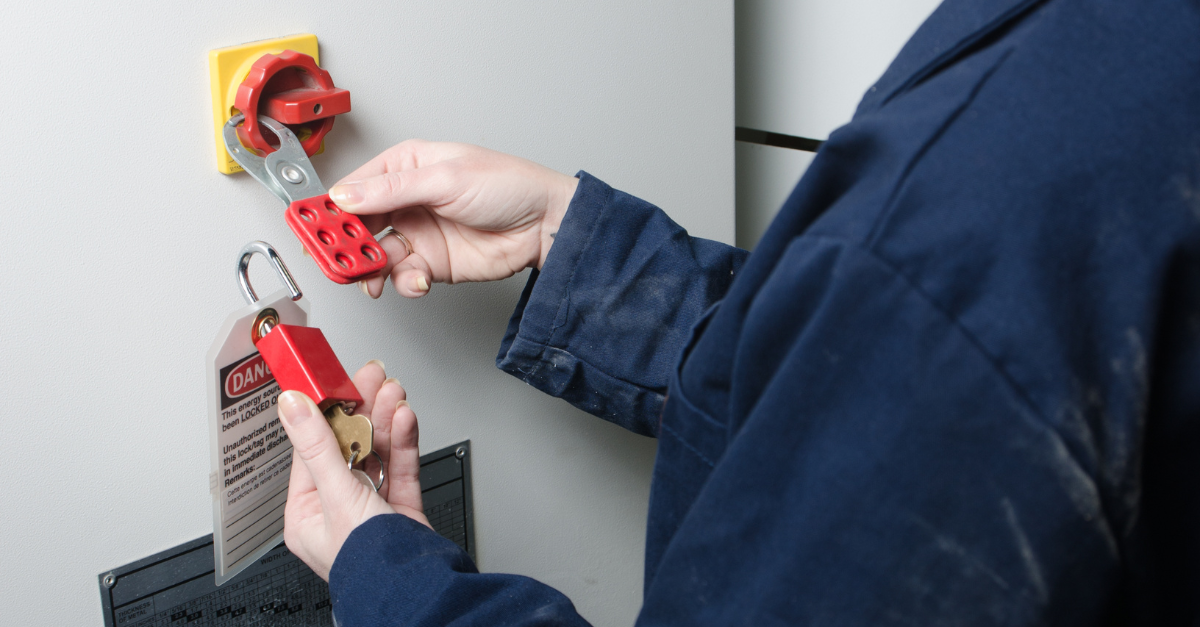The importance of isolation procedures
Isolation procedures involve disconnecting electrical equipment or circuits from their power source to ensure they remain de-energized while maintenance or repair work is being carried out. This process is vital for preventing accidental re-energization, which can pose serious risks to electrical workers.

Key steps in isolation procedures
- Consultation: Before starting any work, consult with the person managing or controlling the workplace. Notify all affected persons about the planned work to ensure coordination and safety.
- Identification and isolation: Identify the circuits requiring isolation. This step involves disconnecting active conductors from all relevant sources, which may include multiple supply points like generators or photovoltaic systems.
- Securing the isolation: Lock the isolating switches and secure relevant conductors. This step is crucial to ensure that the electrical equipment remains de-energized. Use locks and tags to provide clear information about the isolation status.
- Tagging: Tag the switching points to inform everyone at the workplace about the isolation. Tags should be durable, securely attached, and clearly state the warning, including any specific hazards.
- Testing: Test to confirm that the relevant circuits and conductors are de-energized. Re-test if the worker temporarily leaves the area to ensure the isolation remains effective.
- Supervision and training: Provide proper instruction, information, training, and supervision to ensure all workers understand and follow the isolation procedures.
Compliance with Australian Standards
Australian Standards for lockout/tagout procedures, such as AS/NZS 4836: 2022, outline the requirements for safe working on or near low-voltage electrical installations. Adhering to these standards is essential for maintaining workplace safety. Key points include:
- Isolation points: Ensure isolation points are readily available, accessible, and suitable for the type of isolation being conducted.
- Control mechanisms: Use control mechanisms that prevent the electrical equipment from being inadvertently re-energized. These may include switches with built-in locks or additional components like clips or pins.
- Personal locks: If multiple workers are involved, each should apply their personal lock to the isolation point. This ensures that no one else can re-energize the equipment while work is ongoing.
Locking and tagging systems
Proper use of locking and tagging systems is critical for effective isolation. Here are some best practices:
- Danger tags: Attach danger tags to locks at all isolation points. These tags should warn that the equipment is isolated and must not be reconnected. Tags should be signed, dated, and only removable by the person who applied them.
- Out-of-service tags: Use out-of-service tags to indicate equipment that is not safe to use or is under maintenance. These tags should clearly state the nature of the defect and be removed only by a competent person after ensuring the equipment is safe.
Multiple workers
When multiple workers need to lock out a circuit, each worker must apply their own personal lock to a hasp. This ensures that the circuit cannot be re-energised until every worker has removed their lock. The hasp allows multiple locks to be attached, providing a secure and organised method for lockout/tagout procedures. This practice is crucial for maintaining safety in environments where multiple workers are involved in maintenance or repair tasks, as it ensures that all individuals are protected and aware of the lockout status before any work begins.
Addressing workforce challenges
The electrical industry faces a significant shortage of skilled workers. Investing in ongoing training and education programs is essential to ensure that workers are equipped with the knowledge and skills to implement effective isolation procedures.
- Training programs: Develop comprehensive training programs focused on isolation procedures, lockout/tagout practices, and the use of modern technologies.
- Continuous education: Encourage continuous education and professional development to keep up with evolving industry standards and technological advancements.
Conclusion
Ensuring the safety of electrical workers through proper isolation procedures is paramount. By adhering to Australian Standards and company policies, using effective locking and tagging systems and addressing workforce challenges, electrical contractors can significantly reduce the risk of accidents and injuries. Master Electricians Australia remains committed to promoting safety and excellence in the electrical industry. Stay informed, stay safe, and ensure your isolation procedures are robust and effective.
For more detailed information and resources on lockout/tagout procedures, consult the relevant industry guidelines and standards.




